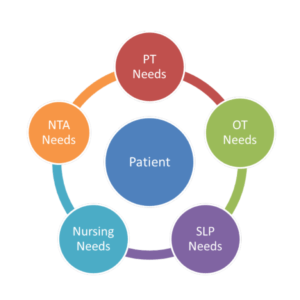2014: The year of the ACO?
Acute care participation in accountable care organizations (ACOs) is expected to surge in 2014, and much of the focus is turning to health information exchange and care management partnerships, notes a new survey released by Premier, Inc.
Growth in the ACO movement had not met original expectations during 2013, a year when participants—mainly larger hospitals—were feeling their way through new payment models and organizational challenges. Back in early 2012, 47 percent of those surveyed had hoped to have an ACO in place by the end of 2013, although less than half of them succeeded. However, another 26 percent predict they will have an ACO by the end of 2014, notes the Accountable Care Organization and Care Management Trends: Fall 2013 Economic Outlook report, which based its findings on executive responses from more than 100 hospitals across 35 states.
Improving integrated data exchange remains a top focus for organizations participating in ACOs. Data analytics is increasingly being viewed as the golden key to predicting care needs and improving outcomes within an ACO’s larger population, the report notes, with 50 percent of those surveyed already using predictive analytics in some way.
"Within our organization, clinical teams will always serve as the 'backbone' to the challenging work around population health," said Michael P. Jeremiah, MD, chair of the Department of Family and Community Medicine at Carilion Clinic, Roanoke, Va., as quoted in the report. "But IT and health analytics provide the 'nervous system' that allow us to fully function and achieve optimal patient experiences and outcomes while controlling cost."
Many executives surveyed are exploring partnerships—including those with payers—to advance their population health management strategies. Those surveyed identified lifestyle/wellness coaching, patient-centered medical homes and end-of-life care as the most popular targets for investment—three programs where older or frail adult populations figure prominently.
Although the ACO model is touted as a cost-saver in the long run, the investments needed for the initial changeover to an ACO are not cheap. Larger, urban hospitals and integrated delivery networks (IDNs) are far more likely to participate in an ACO than small, rural or stand-alone hopsitals.
Most providers also agree that partnerships with payers to provide incentives for better care coordination and reduced utilization costs are crucial to the decision to create an ACO—and to its success. The two most common payer arrangements are upside shared savings and bundled payment models.
Despite the growth predictions for the coming 12 to 24 months, more than a quarter of stand-alone hospitals and nearly 20 percent of IDNs have no current plans to create or join an ACO. Yet, the report concludes, “Whether or not they’re in an ACO, it is clear providers are building the infrastructure and core capabilities essential to ACO formation and population health improvement. This includes investments in advanced healthcare information technology, and the development of partnerships with other providers, local organizations and payers.”
The Premier report comes on the heels of the Centers for Medicare & Medicaid Services Dec. 23 announcement greenlighting 123 new ACOs to begin the Medicare Shared Savings program in January.

Pamela Tabar was editor-in-chief of I Advance Senior Care from 2013-2018. She has worked as a writer and editor for healthcare business media since 1998, including as News Editor of Healthcare Informatics. She has a master’s degree in journalism from Kent State University and a master’s degree in English from the University of York, England.
Related Articles
Topics: Accountable Care Organizations (ACOs) , Executive Leadership , Medicare/Medicaid










